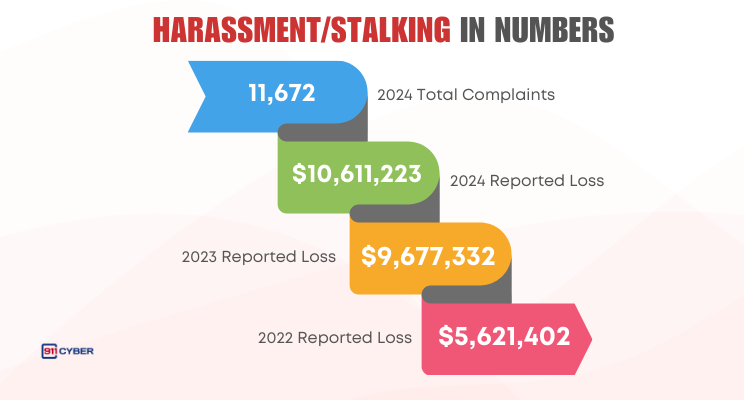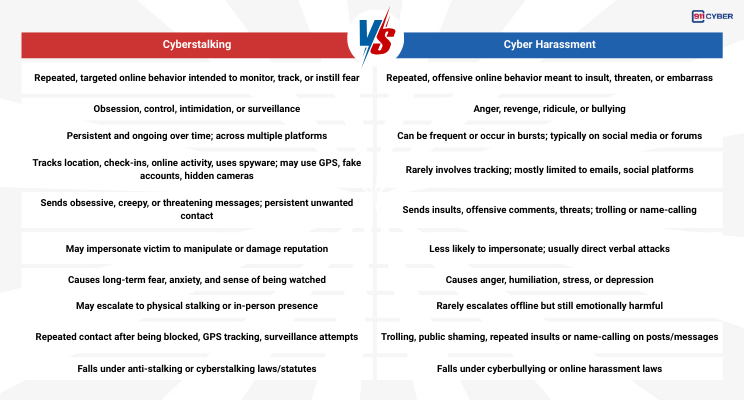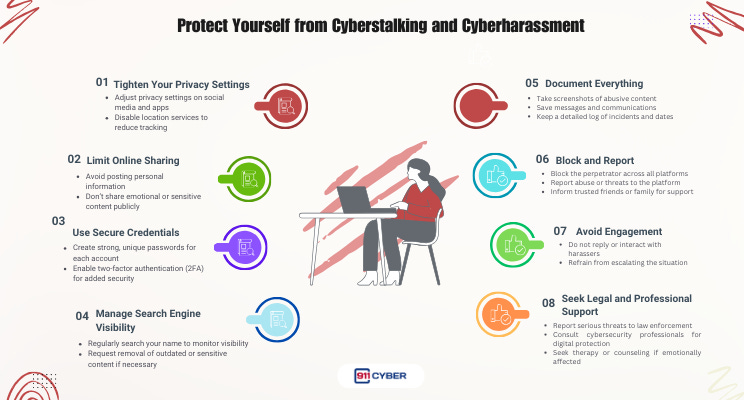When Online Abuse Turns Violent
What would you do if someone kept sending your least favorite food to your doorstep, created fake dating profiles in your name, or even triggered police visits by reporting crimes you never committed?
Welcome to CyberHygiene, my weekly newsletter, where I share tips and actionable data to help everyone stay safe online.
First time seeing this? Please subscribe.
The risk of being targeted online has never been more serious. According to a recent Pew Research Center study, 41 percent of U.S. adults have experienced some form of online harassment, with women and young adults facing the highest levels of abuse. At the same time, artificial intelligence is being exploited to create fake identities, monitor personal activity, and automate harassment, giving bad actors the ability to launch large scale attacks while hiding behind anonymity. In some of the most dangerous cases, online harassment escalates to swatting, where attackers make false emergency calls to send armed law enforcement to a victim’s home, putting lives at serious risk. Alarmingly, many victims never report these incidents, often due to fear, shame, or simply not knowing where to turn for help. The FBI's 2024 IC3 (Internet Crime Complaint Center) report shows that just over 23,000 people reported cyber harassment or stalking, resulting in more than 50 million dollars in losses. This marks a steep rise compared to previous years and is likely only a fraction of the true impact.
What are Cyberstalking and Cyber Harassment?
Cyber Harassment is the use of digital communication tools such as social media, email, or messaging apps to repeatedly threaten, intimidate, or humiliate someone. It can include sending offensive messages, spreading rumors, or posting private information without consent. Unlike one-time conflicts, harassment involves a pattern of behavior intended to cause distress.
Cyberstalking is a more serious and targeted form of online abuse where the offender persistently monitors, follows, or threatens a victim using the internet or other electronic means. This can involve tracking a person’s location, sending unwanted messages, or using technology to gather personal information. Cyberstalking often causes significant fear and disruption to the victim’s daily life.
Swatting is an extreme and dangerous form of cyber harassment where an attacker makes a false report to emergency services with the intent to dispatch armed police or SWAT teams to the victim’s home. This tactic puts victims at serious risk of physical harm and is often used to intimidate or retaliate against someone in an online dispute.
What Makes Cyberstalking and Cyber Harassment Possible?
Cyberstalking and cyber harassment are possible because of several key factors tied to technology and human behavior.
First, the anonymity provided by the internet allows perpetrators to hide their identities, making it easier for them to target victims without immediate consequences.
Second, the widespread use of social media, messaging apps, and other online platforms creates many channels through which harassers can repeatedly contact or monitor their victims.
Third, the constant connectivity of devices means victims can be targeted anywhere and at any time, making it difficult to escape the abuse.
Additionally, the lack of strong regulations or enforcement in some regions allows offenders to act with relative impunity.
Finally, the misuse of emerging technologies like artificial intelligence can automate and amplify harmful behaviors, making cyber harassment and stalking more pervasive and harder to detect.
What to Do If You Become a Victim?
Prioritize Your Safety
If you feel physically threatened, or if the harassment escalates to real-world stalking, contact local law enforcement immediately.
Document Everything
Continuously gather and preserve all evidence. This cannot be stressed enough. Screenshots, URLs, timestamps, names, communication logs – everything.
Report to Authorities
FBI's IC3: File a detailed complaint with the Internet Crime Complaint Center (IC3) at www.ic3.gov. This is a critical step for internet-based crimes. While the IC3 works on larger patterns, individual complaints build the bigger picture.
Local Law Enforcement: File a police report in your jurisdiction. Provide them with all the evidence you've collected.
Attorney General/State Cybercrime Unit: Depending on your location, your state may have specific agencies that deal with cybercrimes.
Notify Online Platforms
Report the abusive accounts and content to the platforms where the harassment is occurring (Facebook, Instagram, X, TikTok, email providers, etc.). They have terms of service against harassment and may suspend or ban the perpetrator's accounts.
Secure Your Digital Presence
Change all your passwords to strong, unique ones.
Enable two-factor authentication on all accounts.
Review and update your privacy settings across all online profiles.
Consider creating new email addresses or phone numbers if compromised ones are being used for harassment.
Seek Support
Reach out to trusted friends, family, or support organizations. Organizations like the National Center for Victims of Crime (Stalking Resource Center) or the Electronic Frontier Foundation (EFF) can offer guidance and resources.
Do Not Engage
This is paramount. Responding, arguing, or pleading with the cyberstalker/harasser can often worsen the situation. Your goal is to cut off their access and eliminate their ability to provoke a reaction.
How is AI Impacting Cyberstalking and Cyber Harassment?
AI is transforming the landscape of cyberstalking and cyber harassment in both troubling and empowering ways. On the negative side, offenders are using AI to escalate their attacks. For example, AI-generated deepfakes and voice cloning can be used to fabricate compromising media of victims, which can be used for blackmail or public humiliation. Stalkers are also leveraging AI tools to track online behavior, infer physical locations, and automate impersonation through realistic fake profiles or chatbots. These technologies allow abusers to scale their harassment efforts, reaching victims across multiple platforms with speed and precision.
However, AI is also becoming a powerful tool for defending against these threats. Social media platforms and security tools now use AI to detect abusive language, identify threatening behavior patterns, and automatically flag or block harmful content. AI algorithms can analyze large volumes of online interactions to identify stalking trends and alert users to unusual activity that may indicate a threat. Additionally, AI-driven tools can help victims collect and organize digital evidence, such as screenshots, messages, and timestamps for reporting to authorities or use in legal proceedings. These advances make it easier for victims to protect themselves and hold offenders accountable.
Ultimately, while AI enables more sophisticated forms of cyber abuse, it is also driving the development of more advanced and proactive defense mechanisms. The key is to stay informed, use privacy tools effectively, and seek out technologies designed to detect and deter online harassment.
What Resources are Available to Help You?
Books 📚:
Surviving a Cyberstalker: How to Prevent and Survive Cyberabuse and Stalking by Alexis Moore
Hacked and Tracked: Cyberstalking &Hacking: Learn what happens and how to protect yourself by Steve Turner
Cyberstalking and Cyberbullying (Cybersafety) by Ph.D. Mcquade, Samuel C., Sarah E. Gentry, Nathan W. Fisk, Ph.d. Rogers
Cyberbullying Survival Guide : Cracking the Code on Cyber Bullying, Harassment, and Stalking by Kelly Lynn Lozano
Stalking, Harassment, Internet Trolling: A Guide to Recovering and Rebuilding After Online Attacks by John Combest
Cyber Bullying: A Crime Against Humanity by Amos Onyango
25 Myths about Bullying and Cyberbullying by Elizabeth K. Englander
Podcasts 🎙️:
Phishy Business - From Cyber Stalking to Online Grooming by Mimecast
MoFo Perspective - The Cyberstalking Resource Initative by Whitney Lee
Cyberstalking with cybersecurity expertRory Innes on Buzzsprout
Cyber harassment, stalking, and swatting are not just internet problems. They are human problems with real emotional, financial, and sometimes life-threatening consequences. As technology evolves, our awareness, protections, and collective response must grow with it.
Staying safe begins with being informed, staying vigilant, and speaking up. Whether you are a target, a friend, or simply someone who cares, your voice and actions matter. Change begins when we take digital threats seriously and stand together to protect one another.
Stay safe out there!
Subscribe and Comment.
Copyright © 2025 CyberMaterial. All Rights Reserved.
This article was written by Marc Raphael with the support of:
Team CyberMaterial and Team 911Cyber
Follow us on:
Substack, LinkedIn, Twitter, Reddit, Instagram, Facebook, Youtube, and Medium.








